#australian lichen
Text
#2064 - Cladia muelleri
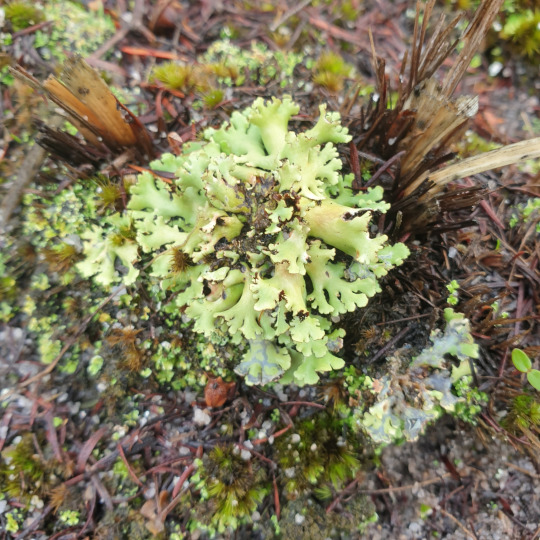
Formerly Heterodea muelleri, until 2012. Growing on clay soil, under Leptospermum.
A foliose lichen widespread in Australia but also in New Zealand and New Caledonia, usually growing on clay soils but it is found occasionally amongst organic litter, and often under trees or shrubs to take advantage of the shade. When wet it is a vivid green, sometimes yellow-green, mass of tightly-clumped lobes. When dry it curls up into yellow-brown to dark brown lumps. The species can be distinguished by a dense brown (occasionally black) mat of rhizines (felt-like hairs) on the lobes.
Most species in the genus are found in the Southern Hemisphere, and can vary very widely in form.
3 notes
·
View notes
Text
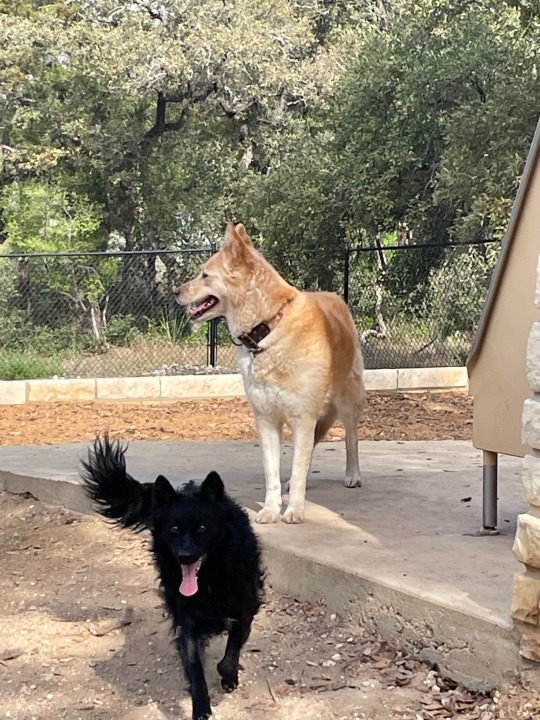
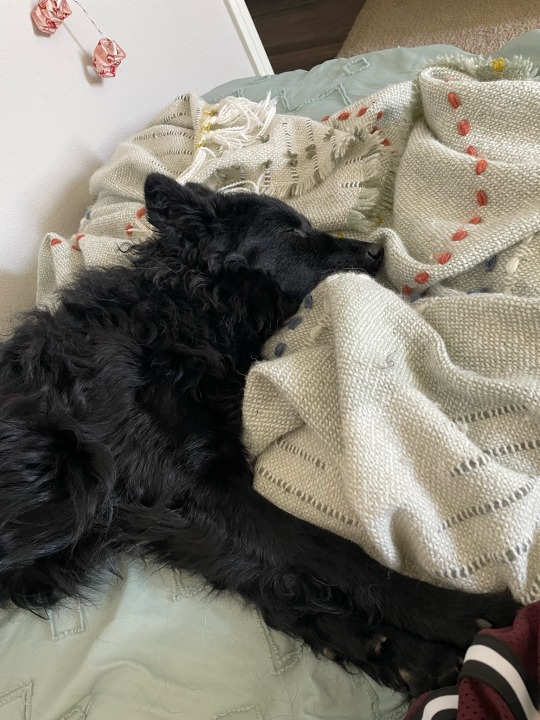

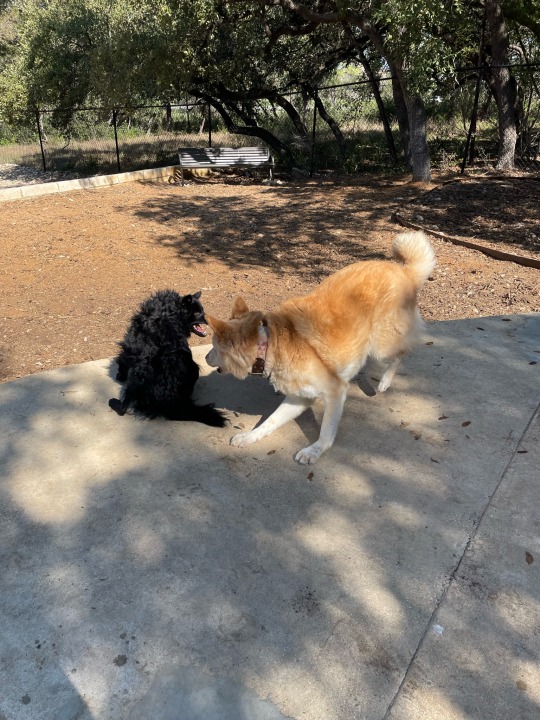
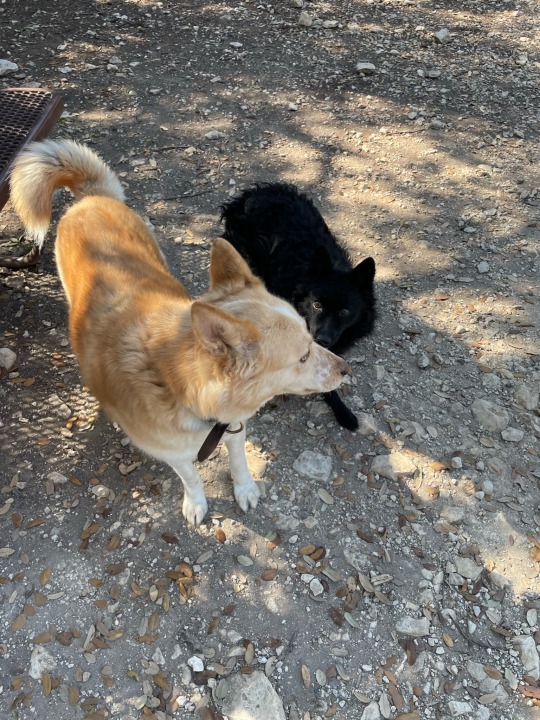


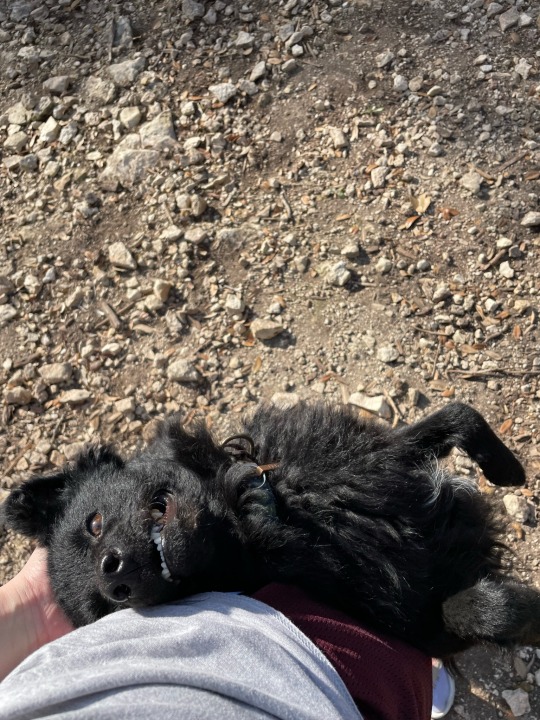


i have been extremely inactive lately and haven't picked up my camera a single time, but please enjoy these random pics of my little creatures over the past couple months
49 notes
·
View notes
Text
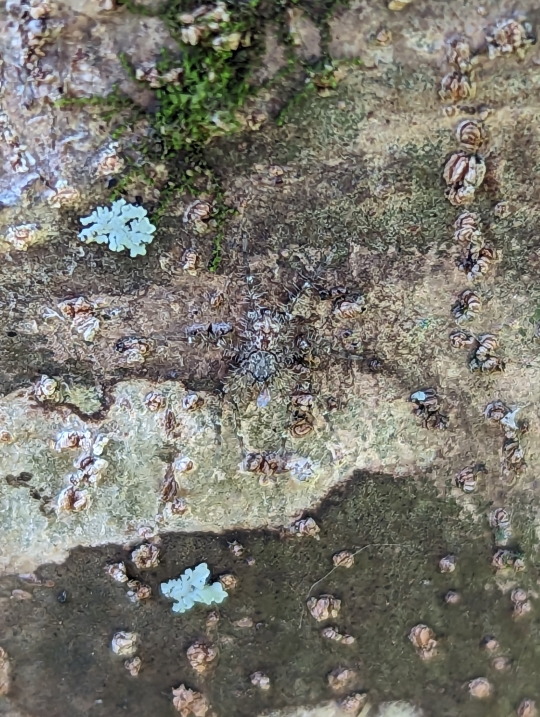
20/09/23 - Photo 1 - juvenile camouflaged against the bark
We've had lichen spiders on this tree for years. Recently I saw an adult guarding an egg sac, and I was excited for them to hatch. Sadly I was away when the hatch occurred. But! I still managed to find a juvenile on the tree.


24/08/23 - Photos 2-3 - adult guarding the egg sac by sitting on top of it
The adult lichen spiders are already well-hidden, but trying to find juveniles is almost impossible. I may have missed this hatching, but I have recorded a previous hatch:
(link)
24/08-20/09/23 - Pandercetes gracilis
QLD:WET
#Arthropods#bugs#bugblr#bug#bugs tw#invertebrates#invertblr#arthropod#arthropoda#Pandercetes gracilis#Australian Lichen Spider#Sparassidae#Huntsman Spiders#Arachnids#Arachnida#Araneae#Spiders#spiders tw#camouflage#Chelicerata#Chelicerates#egg sac#eggs#arachnophobia#juvenile
9 notes
·
View notes
Text
wish I understood music
#thoughts#not enough music about . lichen. australian magpies. yeast etc. fun facts I need to learn to understand music so I can remedy this .
0 notes
Text

August 17, 2024 - Shining Flycatcher (Myiagra alecto)
Found in parts of northern Australia, eastern Indonesia, and Papua New Guinea, these monarchs live in forests, shrublands, mangroves, and wetlands. They mostly eat insects, as well as some fruit, mollusks, and crustaceans, foraging in dense vegetation and around water. Breeding from August to April in their Australian range, they weave deep cup-shaped nests from bark, fibers, moss, rootlets, twigs, spiderwebs, and lichen, often over water. Both parents incubate the clutches of two or three eggs and care for the chicks.
81 notes
·
View notes
Text

yea “desertification” not a great term, obscuring the biodiversity of deserts.
related note: “desertification” term reminds me of how “tree planting” is not necessarily a great thing. (more precisely: “just plant trees” is not good advice universally in every context.)
sounds nice on the surface? but industrial-scale resource extraction companies can build monoculture tree plantations and get away with duplicitously calling it “a forest” or a “reforestation project.” like pine plantations in Chile, where single-species plantations replace extremely unique globally-rare biodiverse Valdivian temperate rainforest.
it’s kinda like seeing a bunch of nondescript greenery in the form of, like, non-native grass lawns or non-native kudzu and saying “oh, well, the landscape is green, and the plants are so thick and full of biomass, therefore it must be healthy!”
and if “desertification” is meant to imply “degraded soils” then it is a misnomer. for example, the Mojave Desert is famous for its crust lichens (”soil lichen”; “biological soil crust”).
and yea, i know that there has fortunately been more criticism applied recently to solar farm projects in California-administered Mojave Desert, since the farms can/do/might necessitate destruction of, say, Joshua trees.
“but it’s all wide-open space!” like how British imperialists/industrialists moved into Australian landscapes, took a look at “the Outback” and thought “look at all of this wasted space.” then cattle rangeland was implanted across the landmass. and dromedaries, rabbits, feral cats, etc. were not initially taken seriously as threats to land, until they threaten resource extraction profit.
ironically(?), the US land-use project and expansion in the Great Basin and Southwest had a lot to do with transforming desert and semi-arid shrubland landscapes into "wastelands” (see Traci Voyles’ writing about Navajo Country and the process of “wastelanding”).
also obscures the existence of very many unique endemic species and lineages which live nowhere else. though this is true of many planet-wide desert regions, it’s especially noticeable in the “Southwest” (including sidewinders, Gila monster, Joshua tree, saguaro, etc.). especially when there’s altitudinal zonation like in the Sky Islands, hosting arid flats, oak woodlands, high-elevation conifer, etc. such that there’s actually more ecological diversity in a few acres of parts of the Sonoran Desert region than in a lot of the rest of the continent. or how the Cuatro Cienegas oasis of the Chihuahuan Desert hosts an endemic slider turtle, endemic softshell turtle, endemic box turtle, endemic alligator lizard, and the planet’s only non-marine stromatolite bacterial communities. you also end up with some microhabitat types which, though maybe not spatially widespread or have relatively low biomass, are staggeringly unique, like fog oases of the Atacama, where moisture is extracted from fog blankets moving in from the sea.
doesn’t even begin to address the people who have lived in -- thrived in -- deserts for millennia. like pre-contact and/or Indigenous maize/corn planting techniques in the Southwest, like Zuni waffle gardens or planting of maize along slopes to take advantage of runoff. such that so many mountainsides across contemporary so-called Mexico essentially host unique varieties/lineages of maize adapted to microclimates, soil types, high-elevation habitat, etc.
is that desert soil “sterile”?
964 notes
·
View notes
Note
Hi ! Do you know Marchantia polymorpha ? Apparently it grows along with lichens, I keep looking for informations about this plant like its geographical distribution but everything I find is too vague. Do you know about any resources for plants like these ?
Liverworts! I don't know jack about liverworts, except that yes, they do often grow alongside lichens, and they're bryophytes. I too would like to know more about them, but also don't know where to find good resources on them.for geographical distributions, I recommend iNaturalist or GBIF. I also trust the Australian National Botanic Gardens website for lichen info, so I assume their bryophyte info page is similarly reliable:
https://www.anbg.gov.au/bryophyte/classification-identification.html
If any of my followers have better resources, please let me know. Here's a picture I took of some liverworts for good measure

They are growing on a Medieval castle wall in the German Alps alongside some very good moss and fern.
21 notes
·
View notes
Text
Day 9 of Australia vacation: driving north and then east; Day 10 (part 1): tasting bubblies
Day 9 was basically a day of scenic driving with a nice beach walk interlude and wildlife in the evening.
After eating breakfast at the restaurant (delicious, but small portions and not enough carbs) and then supplementing it with granola at the cottage, we gave carrots to the horses, checked out, and started driving north along the coast. It was beautiful! After a lunch stop in St. Helens (Wife got some really excellent, fresh fish & chips), we went to Humbug Point Nature Recreation Area, parked near Dora Point, and took a bit of a walk along the beach there--a few minutes in one direction alongside some weirdly dead-looking trees, and then we turned back and went the other way, clambering over rocks and admiring the views. There was colorful lichen on the boulders, and lots of people were fishing from the beach. We also saw some dead blue bottle jellyfish on the beach (small ones), and Wife managed to catch a little crab to say hello to before releasing it back into the sand. From the car I spotted hundreds of black swans and also an Australian pelican!
Then we drove inland through some rainy forests (which may have also been temperate rainforests!). We stopped at Pyengana Dairy, a farm that makes cheese, and eventually arrived in Launceston, where we ate at a Malaysian restaurant and picked up groceries. We then drove out to an exurb to the house we were renting for the night. The final part of the drive, which we did at sunset, was about a kilometer on an unpaved road surrounded by wallabies (and of course the raucous sounds of the laughing kookaburras!).
The house was spacious, oddly decorated (we spotted statues of Ganesha and Buddha, a prayer mat, and lots of breakable decorations), and inadequately supplied with linens. The beds were made with a bottom sheet but no top sheet; one also lacked a blanket. We eventually found more sheets and blankets--just about enough--but there were also insufficient towels. Luckily the hosts brought us additional towels when we complained (3 bath towels for 4 people is not enough! but at least there were hand towels). The house was also pretty recently built, but somehow a bit flimsy.
It was very dark there, and I was so tired that I went to bed rather earlier than usual. It was mostly quiet, though I could hear every step the others took inside the house. But in the middle of the night I was woken more than once by what sounded sort of like snarling, fighting cats. I have only just realised that they must have been Tasmanian devils! I wish we'd seen one.
Day 10
I did a little bit of birdwatching from the deck in the morning before we left, but didn't see anything new. We then drove to a winery that specialises in sparkling wines and did a tasting. We sat on a beautiful patio with a fantastic view, and it was a sunny day with fluffy white clouds, so it was very scenic. And we spotted a wedge-tailed eagle soaring overhead!
Then we drove to Scottsdale and checked into a heritage B&B before being picked up by our guide for a wildlife and scenery tour for the rest of the day; I'll write about that in the next installment.
8 notes
·
View notes
Text
The Great ACT-NSW-NZ Trip, 2023-2024- Tumbarumba
Tumbarumba is another small town near the Snowy Montains, and like most of SE Australia was in mortal danger from the Black Summer bushfires - they had two different fronts converging on them, and the fires reached the edge of town before the wind changed direction. They had to put a temporary dam across the creek that runs through town so the firefighting teams could refill.


We stayed at a property with a paddock out the back, and a lovely little creek at the bottom. The owner is quite a famous photographer, and there was a lot of his work on the walls - including the aforementioned fires halfway down that mountain and less than a kilometer from the house.
As with the previous, here's a few species I've talked about before













#tumbarumba#introduced species#rabbit#australian moth#australian butterfly#australian beetle#lichen#australian fly#australian bird#australian bug#australian ant
1 note
·
View note
Text

my girls 💖🖤
#ava#siberian husky#australian cattle dog#mixed breed#lichen#mudi#dog photography#colorado#6 years#1 year
87 notes
·
View notes
Text
Am La and Paititi
In Peru a man wearing a strange outfit
claimed to have found Paititi in the forest
after following instructions
that were written on a tablet
that he "rescued" from a temple in Belize
shortly before it was demolished.
The man, going by the name Am La,
spoke the local language of the town well,
though he did so in a very strange accent,
one that didn't align with people from
Peru, Belize or the developed world.
He claimed to be from east central Australia
and had aboriginal routes
to the islands north of the continent.
His clothes were black all over
and completely covered ever patch of skin,
along with a mask that covered their face
making it impossible to identify their race.
However due to way
that the mask fit to the face
it was easy to guess
that they had a flat nose.
Every item of clothing
was not manufactured
but was seemingly built
out of handmade fabrics.
The mask however
looked to be made of
a single piece of sculpted wood.
they wore shoes with thick fabric soles
trousers with wooden kneepads,
a tunic-like long sleeve hooded shirt,
with wooden elbow pads and a wooden collar,
a thick fabric waistcoat,
wooden vambraces,
and gloves that had wooden armor on the back,
not unlike a knight's gauntlets.
None of the clothes had any markings,
except for possibly the palm of the gloves,
where the lines of the palm of the hand
were scorn into the glove fabric somewhat
revealing a second golden colored glove beneath
so that if he were to look at his palms
it would form a number 7 on his right palm
and a mirror of it on his left palm.
According to Am
he entered the town a few days ago
wearing his current outfit
and paid some locals in legal tender
to give him bed and board
where he contacted his Australian friends
about his current progress at the time
via a phone call
using a communication satellite
though mysteriously
nobody in town recalls this event.
The next day he set off into the forest
and began tracking certain markers
he believed to placed by the Paititi people
as secret waypoint indicators
that had been overlooked by others
as simply natural formations of the forest.
On his journey
he saw various species unknown to science
including lichen, plants and small arthropods,
which he made a mental note of their appearance
before moving onto his main goal.
At one point
he encountered a dark brown large cat
which at first he kept his distance to
but the cat approached him regardless.
At this point he acknowledged them
and let them approach
to which the cat rubbed it's cheeks on his neck
and afterwards lost interest and left.
Further along he overheard animal calls
though these noises were inaccurate
so they were most likely made by people.
It didn't sound like they'd noticed him
so he kept his distance from them and the trail
and hid among the forest.
Later
a small group of men wearing red and yellow
ran past along the trail path
with a fast pace but not haste.
Unfortunately from his position
he didn't get the opportunity to get a better look.
Staying parallel to the path proved difficult
since there were a lot of natural hazards
but he continued on this path
to avoid being noticed by those using the path.
At some point he needed to sleep
so he took another path
further from the trail
running diagonal to the parallel path
walking forward and back to confuse the tracks.
After walking a significant distance
he walked in multiple circles around the area
disturbing various sections of undergrowth
to make it hard to tell where his path ends.
He then peeled back some undergrowth
and dug a small space beneath to hide in
in such a fashion that no soil would be seen above
and the disturbed shape above ground
would be minimal
and resemble natural shifts in the environment.
Resting on and off throughout the night
they were able to hear trackers scanning the area.
At multiple points they went quiet
before attacking
what they imagined to be his hiding spot
and eventually gave up and left.
It was during these attacks,
that he heard the sound of bullets
being loaded into a firearm.
Note, these were not people from civilisation,
but they had somehow acquired firearms.
After resting
he left while the trackers
were still wandering the area
by using the trackers' own footprints
and found a meandering path
that he saw went back to
an earlier part of the path he walked before
around the point where
he started walking parallel to the path.
Making a confusing path
by doubling back many times
he took some of his route from tree to tree
as he'd noticed some of the trackers using
then fashioning shoes from rocks
that would make similar indents to the trackers
walked back and forth
to a further point of the path
and took several routes off the path
to multiple parallel paths
making a confusing labyrinth.
At this point
he noticed that he wasn't the only one
who was employing these kinds of tactics
as it appeared that the cat from earlier
was also attempting to hide their tracks
in much the same way.
By wiping the neck of his outfit with his wrist
he left several false cat scent marks
at certain points along the path
to confused the trackers.
He also identified
a plant the trackers smelled of
and rubbed this onto his other wrist
so he could also leave false tracker scent marks.
Eventually he noticed signs of habitation
in the form of former camp sights
which of course he used as waypoints
to spiderweb more false tracks around.
He'd left the trackers in his dust a day ago
but noticed he was still being followed
or at least his tracks were
and so far the follower was still clueless
and seemed to be wandering in circles.
Later using the same strategy to sleep
he noticed the large cat searching around
but just like with the trackers
they were equally confused.
However as the trackers eventually drew close
the cat let out an alarm call
seemingly attempting to warn him
even though they couldn't track him.
This time,
while still distant from both followers
he decided to move on
and leave his confusing tracks
and as he rested that night
he made a call
like that the cat made when he first saw them.
As before
the cat turned up long before the trackers
but this time they called the cat over
and decided to work with them
to leave a labyrinth behind
moving in the middle of their resting time
to throw the trackers off.
This time it seemed they left the trackers behind
but they kept up the confusing path anyway.
Progress was faster this time
now that they'd found their rhythm.
Noticing other waypoint trails
were beginning to converge
to a point ahead of him
that lay over a ridge
he decided to circle around the ridge
to reduce the chances of being spotted.
This also meant
he could work the other routes into his scheme
and he came around the ridge he spotted Paititi.
He saw a way in which he could go
almost completely around the complex
but would have to stop short of being behind it
because it would be too difficult to hide.
Unfortunately this route wasn't much of an option
because it seemed there was quite a commotion
and people were running in and out of
various paths that lead away from the complex.
That might have even been his doing.
Taking a different route
that lead away from the complex
he planned to go to the nearest stopping point
then cut across to another path
and then later cut back to the original trail.
This worked for a bit
but now the original trail had guards along it
so a rather tiresome detour was needed
that due to land formations
took him on a wild detour back to town.
Still, this route provided sleeping spots
that no trackers ever came anywhere near
which the large cat decided to join him in
occasionally patrolling the area while he rested.
It was at this point
that he asked for a pen and paper
and began sketching out various plants and bugs.
He then thanked the people
and headed off in the direction of larger civilisation
continuing to sketch as he walked.
For a few days since a large cat was seen in the area.
It never approached the town
and eventually left of its own accord.
0 notes
Photo




Two Lichen Spider Specimens on this Walk
Pandercetes gracilis
19/07/22
#Pandercetes gracilis#Australian Lichen Spider#Araneae#Spiders#spiders tw#spider#camouflage#arachnophobia#arachnids#Arachnida#Sparassidae#Huntsman Spiders#Chelicerata#Chelicerates#bugs#bugblr#bug#bugs tw#entomology#insectblr#Arthropods#Arthropoda#invertblr#invertebrates
24 notes
·
View notes
Text
Roof Restoration in Sydney: A Comprehensive Guide

Sydney, with its iconic skyline, beautiful beaches, and vibrant urban life, is a place of beauty and diversity. However, the city's coastal location also means that buildings here are exposed to harsh weather conditions, including heavy rains, strong winds, and the scorching Australian sun. These elements can take a toll on the roofs of Sydney homes, making roof restoration an essential consideration for maintaining the integrity and aesthetics of one’s property. In this comprehensive guide, we delve into the nuances of roof restoration in Sydney, offering insights into its importance, the process involved, and tips to ensure a successful restoration project. For More Information https://roofrestoration-sydney.com/
The Importance of Roof Restoration
The roof is one of the most critical components of a house, providing protection against the elements and contributing to the overall structural integrity of the building. Over time, wear and tear can lead to issues such as leaks, tile damage, and deterioration of roofing materials. If left unaddressed, these problems can lead to more significant issues, including structural damage, mold growth, and reduced energy efficiency. A well-timed roof restoration can prevent these outcomes, extending the life of your roof and enhancing your home's value and curb appeal.
Signs Your Roof Needs Restoration
Identifying the need for roof restoration early can save homeowners from costly repairs down the line. Here are some signs that your roof may require professional attention:
Age: If your roof is over 20 years old, it may be time for a thorough inspection and possibly restoration.
Leaks: Any signs of water damage or leaks inside your home could indicate roof issues.
Damaged Tiles: Broken, cracked, or missing tiles are clear indicators that restoration is needed.
Sagging: A sagging roof is a serious issue, suggesting structural problems that need immediate attention.
Moss and Lichen Growth: These can cause tile damage and block gutters, leading to water damage.
The Roof Restoration Process
A typical roof restoration in Sydney involves several key steps, each crucial for ensuring the longevity and effectiveness of your roof. While specific processes may vary depending on the type of roof and the extent of damage, the general procedure includes:
1. Inspection and Assessment
The first step is a comprehensive roof inspection by a professional to assess the extent of damage and determine the necessary restoration work. This assessment will cover the roof's structure, surface condition, and any potential leak points.
2. Cleaning
Roof cleaning is performed to remove dirt, moss, and other debris. This step often involves high-pressure washing, which prepares the roof for further restoration work by providing a clean surface.
3. Repairs
This stage addresses any damage found during the inspection, such as replacing broken tiles, re-bedding ridge caps, and fixing leaks. Ensuring all necessary repairs are made is crucial for the longevity of the restoration.
4. Sealing and Coating
After repairs, a sealant is applied to protect the roof from weather elements and prevent leaks. The roof is then coated with a protective layer, often reflecting specific aesthetic preferences while also enhancing the roof’s resistance to UV rays and further weathering.
Choosing the Right Roof Restoration Service
Selecting a reliable roof restoration service is paramount. Here are some tips to help you make an informed decision:
Research: Look for well-established companies with good reputations in Sydney. Online reviews and recommendations from friends or family can be invaluable.
Licenses and Insurance: Ensure the service provider has the necessary licenses to operate in Sydney and carries insurance for their work.
Quotes: Obtain detailed quotes from several companies to compare prices and understand what’s included in their services.
Warranty: Ask about the warranty offered on the restoration work. A guarantee can provide peace of mind and protection for your investment.
DIY vs. Professional Roof Restoration
While some homeowners may consider a DIY approach to save costs, roof restoration typically requires professional skills, tools, and safety equipment. The risks involved in DIY roof work, combined with the potential for overlooking critical issues, make professional services the safer and more reliable choice.
Maintaining Your Restored Roof
After restoration, regular maintenance can keep your roof in top condition for longer. This includes cleaning gutters, inspecting the roof regularly for signs of damage, and addressing any issues promptly.
Conclusion
Roof restoration in Sydney is not just about fixing current problems; it's about investing in the future of your home. By understanding the importance of roof restoration, recognizing the signs that restoration is needed, and choosing the right professionals for the job, homeowners can ensure their roofs remain in excellent condition for years to come. Remember, a well-maintained roof not only protects your home from the elements but also enhances its aesthetic appeal and overall value.
0 notes
Text
Super detailed character profile chart
Character Name:
First Name: Faye
Last Name: N/A
Nickname (if any): N/A
Basic Information:
Age: Appears as 19.
Gender: Shapeshifter. Not Applicable. Generally she/they
Date of Birth: 13th October
Place of Birth: Australia.
Nationality: Australian
Physical Appearance:
Height: 5'4
Weight: not sure, but shes pretty skinny (doesnt eat)
Build: Very thin. shortish. slim.
Hair Color: Black
Eye Color: Purple
Scars or distinguishing marks: she has a few scars over her body (loads, actually. all over her.)
Personality Traits:
Positive Traits: Flirty, somehow charming, honest
Negative Traits: Can be possessive, obsessive, manipulative, sadistic, masochistic, blunt
Background and History:
Family Background: ...oh gods i wrote a short story about this.
Parents: 2 unknown cult leaders.
Siblings (if any): N/A
Childhood: Horrible. Cult. Sold. Orphanage. Murdered.
Education: Not really tbh... she was 'homeschooled' (taught to do stereotypically 'feminine' things like drawing cooking and cleaning)
School/College/University: N/A
Major/Area of Study: N/A
Favorite Subjects: She likes drawing and writing
Least Favorite Subjects: Maths
Career/Profession: Contract killer
Current Occupation: Contract killer
Previous Jobs (if any): Slave
Career Goals: Nope
Hobbies and Interests:
Hobbies: Drawing, gardening
Interests: ...her partners. Sex. Murder. Torture. Flowers.
Relationships:
Marital Status: Married multiple times!!
Romantic Relationships (if any): Mon, Vivi, Hypar, guy-i-forgot-the-name-of-who-bought-her, chronos, drewp, thermia, gobbo, selma, ash, good wizard, moss, slyme, tomas, cal, eris, cy
Friendships: Drew, Robin, Crow, Lichen and Neo (they fucked? More friends with Benefits)
Closest Friends: Robin and Drew probably
Relationship dynamics: ....oh gods i dont even know. she flirts with most of them? switches around
Strengths and Weaknesses:
Strengths: Well magic, poisons... quite a bit
Weaknesses: her partners. claiming her partners dont love her. water
Goals and Ambitions:
Short-term Goals: making aileax love her. getting pets
Long-term Goals: having fun ig
Fears and Insecurities:
Common Fears: water. losing her partners
Insecurities: that people dont like her
Quirks and Habits:
Quirks: purple eyes ig
Habits: flirting loads, giggling
Beliefs and Values:
Religious or Spiritual Beliefs: She doesnt
Moral Code: no rape, no child abuse, dont kill anyone not in double digits or more
Political Views: ANARCHYYY
Favorites:
Favorite Foods: blood, souls, pancakes, bananas
Favorite Books: Unknown books from hundreds of years back
Favorite Movies/TV Shows: The Outsiders, Nimona
Favorite Music: Punk rock/rock/alternative/fast paced sex shit
Favorite Color: purple/black
Dislikes:
Disliked Foods: watermelon
Disliked Activities: diplomacy shit
Pet Peeves: those annoying random sounds... flashing lights
Miscellaneous:
Talents or Skills: Murder? Making poisons
Secrets (if any): dunno...
1 note
·
View note
Text

https://www.floridamuseum.ufl.edu/science/what-is-a-herbarium/#:~:text=Actually%2C%20it's%20a%20collection%20of,for%20both%20education%20and%20research.
Typically, the plants are flattened, dried and mounted on uniformly sized, archival paper, but some herbaria also include mosses, algae, fungi or lichens in archival paper packets, seeds, wood sections, pollen, microscope slides, DNA extractions or jars of plant parts preserved in alcohol or glycerin.
https://www.landcareresearch.co.nz/tools-and-resources/collections/allan-herbarium/


Australian collection of species shows the first record of invasive species Gorse as on record in 1884!
What a great way to study species and proves that by drying securing no dampness interferes with my plant specimens they can last over hundreds of years in my processes.



Some of my dried and cured in air and sun plant species included in the photos above (species as pictured: unidentified holly-like species, pohutakawa leaves, hebe, ginko leaves) collected from late autumn to late winter/early spring 2023.
0 notes
Text
April 1, 2023 - Day 95
Walvis Bay, Namibia, South West Africa
We arrived in Walvis Bay on May 31st and spent 2 days in this delightful place. It is so much different from the other places we visited in West Africa that it is difficult to explain. The place only has 85,000 inhabitants but it is modern and clean with no evidence of the extensive poverty observed in the other West Africa places we visited. Namibia was a German colony but everyone spoke English as well as a language they called Afrikaans which is a mixture of Germany and Dutch. Walvis Bay is situated on a huge bay that is apparently used as a storage yard for ships and drilling rigs not in use.
On the first day we just visited the town and a large brand new very modern shopping mall. The natives had set up a bazaar on the side walk outside the pier’s gates and I found some raw Lapis and turquoise that was being sold by a native 30 year old Ovahimba woman in her native dress. I bought the stones for ten dollars and she let me take a photo. It is a beautiful image but I don’t think I can post it because she is bare breasted. There is very little water in Namibia and she told me she has never taken a bath but rubs her body with sand to keep herself clean.
On the second day I took a 4 wheel drive tour out to a place called Moon Valley. On the drive out we passed through some of the most desolate countryside I have ever seen. Pure desert pavement with huge dunes. The driver told us the dunes move about three meters a year. The Japanese tried to build a rail line through the desert in 1927 and it was covered with sand in two years so was abandoned. There were two big water lines that were along the road that go out to two Uranium mines owned by the Chinese and Australians. After a drive of about 50 miles we got to Moon Valley which is part of two National Parks and it is a Geologist delight. Large fully exposed weathered granite peaks covered with lava intrusions with very little vegetation on them. Much like the badlands of South Dakota but made out of granite instead of sandstone. The only vegetation was lichens. Over 60 species of lichens have been identified living in the region. There was also a very rare plant called Welwitschia mirabilis that is only found in the wild in Namibia. I put a photo of both the male and female plant below.
We stopped and had lunch at a place called Goanikontes Oasis which was an old Germany plantation first settled in 1849. It is now a resort and camp on the Swakopmund River right in the middle of the Namib Naukluft and Dorob National Parks Moon Valley. It would be fun to go and stay at the camp for awhile. The land scape is amazing and apparently there is a lot of African wildlife early and late in the day. We then visited the town of Swakopmund which is a beach resort about 15 miles North if Walvis Bay. It is full of beautiful old German colonial architecture that has been well maintained and preserved. It was founded in 1892 as the main harbor for German South West Africa. Finally we visited a large sand dune called Dine 5 where you could ride a dune buggy.
The whole area around Walvis Bay is a desert but after being in other West Africa nations for the past two week this place was a real delight.


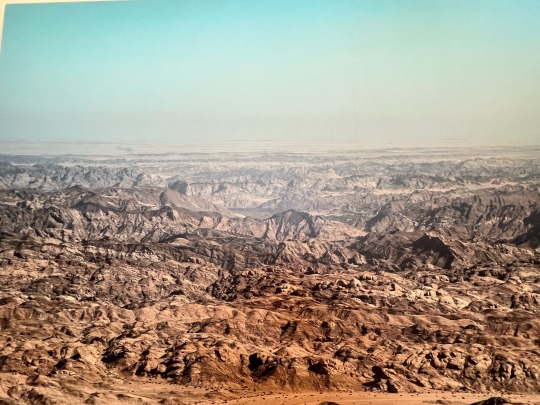




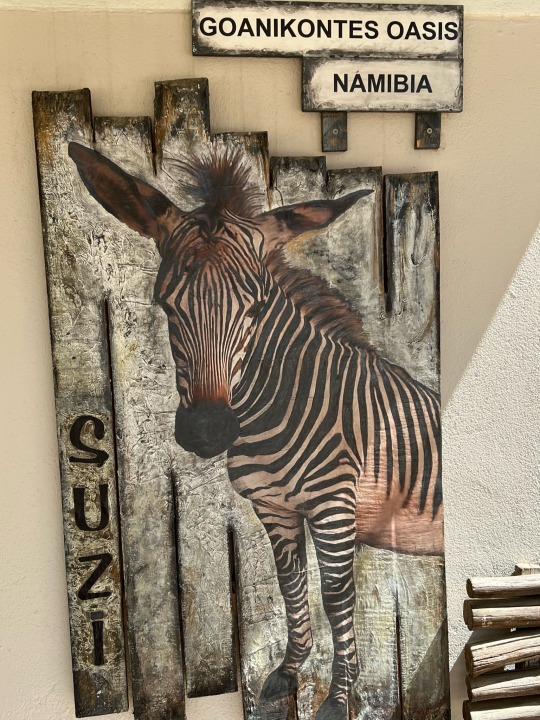

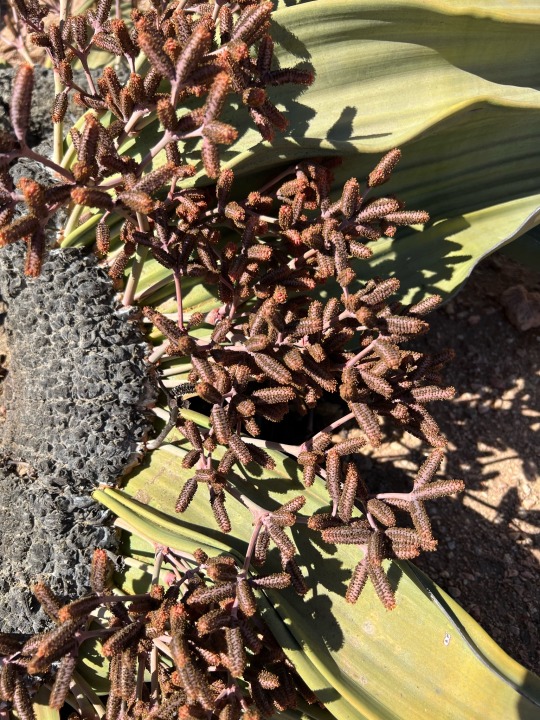
1 note
·
View note